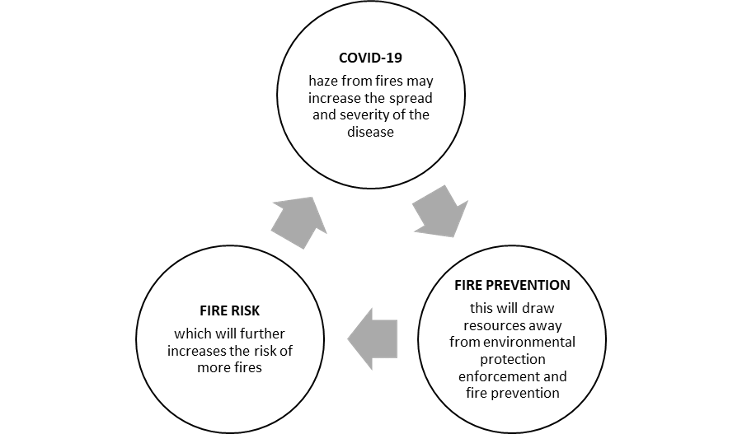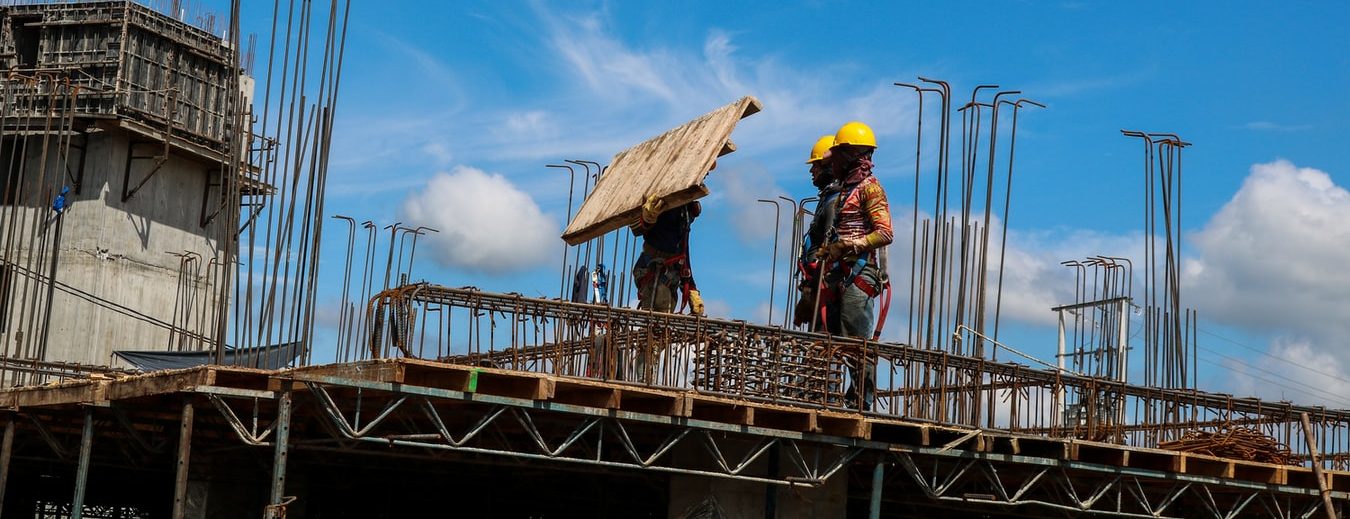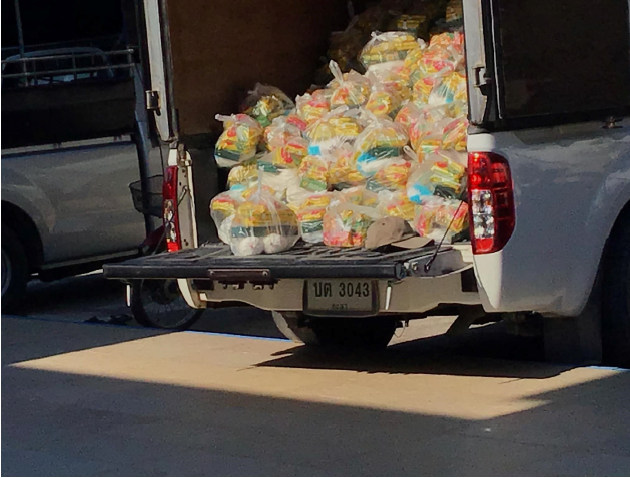“While COVID-19 may be increasing the risk of a significant haze incident, there is growing evidence that suggests that air pollution both decreases base level immunity to the disease and increases mortality”, writes Dr Thomas Smith, Assistant Professor at the Department of Geography & Environment, London School of Economics in London, and Dr Helena Varkkey, Senior Lecturer at the Department of International & Strategic Studies, the University of Malaya in Malaysia.
_______________________________________________
While the mid-term meteorological outlook is for a ‘moderate’ fire season in Indonesia and Malaysia later this year, there are a number of reasons that suggest the socioeconomic impacts of COVID-19 will increase the prevalence of agricultural and land clearance fires and the resultant haze pollution. Further, there is mounting evidence revealing that particulate matter in the haze produced by the fires may increase transmission rates of COVID-19, exacerbate the symptoms of the disease and severity of infection, and increase overall mortality. We explore the reasons why COVID-19 related lockdowns and economic recessions may lead to the increasing use of fire in Southeast (SE) Asia’s peatlands in the short- and long-term. We then discuss the role that haze pollution (as well as historic population exposure to this pollution) might play in exacerbating the COVID-19 crisis through interactions between air pollution and the virus. Finally, we speculate that a novel feedback loop may exist that exacerbates both the severity of the pandemic and the risk of fire-related haze events.
Haze outlook for 2020
The Southeast Asian “haze season” usually refers to the regional air pollution crisis driven by deforestation and agricultural fires, predominantly in Indonesia, generally occurring from late August through to November (Varkkey, 2015). Beyond its immediate effects in Indonesia, the haze often travels across borders to affect Singapore, Malaysia, and sometimes further afield. There are also increasingly regular haze events in northern Southeast Asia caused by agricultural burning in the ‘golden triangle’ border region of Thailand, Laos, and Myanmar (Greenpeace, 2020).
Much of the haze originating from Indonesia is produced by fires on carbon-rich tropical peatlands. Under pristine forested and waterlogged conditions, peatlands rarely catch fire. However, small-, medium-, and large-scale developers often drain peatlands to prepare them for smallholdings and commercial plantations. This process dries out the surface peat layer such that it becomes highly combustible. Predicting the timing, extent, and severity of the haze season is complex given that the fires are a function of the weather and longer-term climate variability (e.g. El Niño) as well as land and water management. In August 2020, NOAA’s ENSO forecast suggested that El Niño (associated with hot and dry conditions in Southeast Asia) would be unlikely during 2020 (NOAA, 2020), reducing the risk of widespread fires that have plagued previous El Niño-exacerbated dry seasons such as those in 2015 and 2019 (Figure 1). However, the Singapore Institute of International Affairs (SIIA), which releases annual ‘Haze Outlook’ reports, warns of a ‘moderate’ risk of a severe transboundary haze incident in 2020 (SIIA, 2020). Their reasoning for this rating is heavily influenced by the impacts of the COVID-19 pandemic.
Figure 1: A true colour satellite image with fire hotspot detections (red) over parts of Malaysia, Indonesia, Singapore and Brunei during the height of the 2019 haze season, 14 September 2019 (NASA Terra MODIS). Visible plumes of smoke shroud much of Kalimantan, while plumes from fires on Sumatra are driven by the wind northwards towards Singapore and the Malay Peninsula. NASA
COVID-19 and tropical peatland fires
Indonesia has the highest number of COVID-19 cases and deaths in East Asia, with 143,000 confirmed cases and 6,277 deaths (as of 17 August 2020). With an increasing daily case count, the virus may peak during the haze season. The potential influence of the pandemic on tropical peatland fires can be broken down into three critical COVID-19 impacts:
- the reallocation of government budgets for environmental protection and fire prevention to the COVID-19 response;
- lockdown and physical distancing measures inhibiting the deployment of government, NGO, and private sector personnel responsible for environmental protection, community engagement and fire prevention; and
- the economic impacts of the pandemic and associated lockdowns on certain plantation companies who may use fire and illegal encroachment to raise profitability.
First, in April this year, the Indonesian Ministry of Environment (KLHK) declared a reallocation of 1 trillion rupiah (US$111 million) from its budget to help forest communities and farmers affected by COVID-19 (PPID, 2020). The consequences of the reallocation include a 50% budget cut for the ministry’s fire-fighting teams that are responsible for finding and fighting fires; this has in turn led to a 34% reduction in the area of fire patrolling (Ungku and Christina, 2020). In addition to this, the mandate of the Peatland Restoration Agency (Indonesian acronym BRG), a key agency in the fight against peatland fires, expires at the end of this year (Aqil, 2020). With much work left to be done but no indication if this mandate will be extended, there is rising concern that the BRG will also be a victim of COVID-19 budget overstretch.
Second, lockdowns and social distancing rules compound the budget cuts, further inhibiting patrol efforts. It is not just government personnel who are stating that COVID-19 restrictions “hampers our access to the flames” (Ungku and Christina, 2020), but also stakeholders in the private sector who are finding it difficult to assess the situation on the ground, even on their own plantations (Jong, 2020). NGOs, often responsible for encouraging more sustainable peatland livelihoods through outreach, fire-free programs, and demonstration projects, have shifted their focus to online activities at a crucial time of the year, the effectiveness of which is highly dependent on reliable internet access, which is often lacking (Ungku and Christina, 2020).
Finally, Indonesia’s economy is forecast to contract for the first time since 1999. Furthermore, key sectors linked to fires and haze came into the COVID-19 pandemic on the heels of an already challenging financial year. In particular, palm oil saw especially low commodity prices in 2019 (Khoo, 2019), influenced by issues like the European Union’s decision to phase out palm oil-based biofuels by 2030.
There are concerns that the associated unemployment and economic pressures will drive smallholders as well as some plantation companies to shift to cheaper and less sustainable practices. While larger, more publicly visible transnationals have made commitments to sustainable certification schemes such as the RSPO (Roundtable for Sustainable Palm Oil) to maintain sustainability practises at all times, this may not be the case for less prominent small- and medium-sized companies which have not yet made such commitments. In the face of COVID-19 related economic pressures, such companies may be more inclined to infringe upon environmental regulations to offset immediate losses and increase short-term profitability, including the use of fire and illegal encroachment into tropical peat-swamp forests (Suwiknyo, 2020).
These economic pressures combined with government cut-backs and movement restrictions decreases the likelihood of effective policing, prosecutions and convictions, raising the possibility of a more severe transboundary haze event should there be a strong El Niño dry season. The likelihood of a longer-term economic downturn suggests that the impacts of COVID-19 will reach beyond the 2020 haze season into future years.
How might haze exacerbate the pandemic?
While COVID-19 may be increasing the risk of a significant haze incident, there is growing evidence that suggests that air pollution both decreases base level immunity to the disease and increases the mortality rate of the disease.
A growing body of literature has found statistically robust correlations between air pollution and COVID-19 cases, hospital admissions, and deaths (Cole et al., 2020). In a US study, an increase in concentrations of fine particulate matter (PM2.5) of just 1 µg m-3 was associated with a 15% increase in COVID-19 deaths (Wu et al., 2020). These results are especially concerning for the Southeast Asian haze season because concentrations of PM2.5 can reach 100s–1000s µg m-3 during haze events, many times higher than concentrations investigated by studies of the COVID-19 relationship in the US, Italy, and the Netherlands (Cole et al., 2020).
Understanding the precise pathological mechanism for the correlation is a work in progress, although Acute Respiratory Distress Syndrome (ARDS), which has long been linked to polluted air, has been a major cause of COVID-19 related deaths. One notable finding from the US study (Wu et al., 2020) is that the high rates of COVID-19 related deaths do not only correlate to current air pollution conditions but also to prolonged exposure to polluted air over time. For example, those living in US counties that have experienced worsening air pollution over the past 15 to 20 years have a substantially higher mortality rate. PM2.5 particles, the particles in air pollution that are small enough to be inhaled into the lungs and even enter the bloodstream, have the long-term effect of weakening human respiratory, cardiovascular and immune systems. In the context of COVID-19, someone with already weakened lungs and respiratory tracts have a higher risk of not just getting infected and but also suffering worse symptoms. Both acute and chronic exposure to haze, therefore, decreases the base level immunity of the population to COVID-19 and increases the risk of death.
Perhaps most worryingly, there is also evidence to suggest that particulate matter may also act as a vector for the relatively tiny virus (Setti et al., 2020), offering a surface for the virus to cling to. Frontera et al. (2020) suggest that viruses travelling on the surfaces of air pollution particles were able to survive longer and travel further (>2 m) through the air, potentially increasing the basic reproduction number (R) – the spread – of the disease. The minute nature of the haze pollution particles as a host for the virus (as opposed to larger droplets of saliva) has also been linked to deeper penetration into the human respiratory system, causing a more severe infection (Frontera et al., 2020).
A novel socioenvironmental-epidemiological feedback mechanism?
The impact of air pollution on the virus spread and severity is likely to scale with the concentration of particulate matter in the air and the density of people exposed to both the disease and the air pollution (Cole et al., 2020, Frontera et al., 2020). The situation during a major haze incident in Southeast Asia is conducive to this effect, with hazardous levels of particle concentrations coinciding with densely populated housing and urban centres.
From this, we may deduce that there is the potential for a novel socioenvironmental-epidemiological reinforcing feedback loop (Figure 2), whereby environmental air pollution from fires may increase the spread and severity of a disease, which may in turn draw resources away from environmental protection enforcement and fire prevention, which further increases the risk of more fires. This vicious cycle may not be unique to Southeast Asia and haze, but may also play a role in exacerbating the air pollution and COVID-19 crises in other deforestation fire-affected regions, such as Russia and Brazil.

Figure 2: A socioenvironmental-epidemiological feedback loop
References
AQIL, A. M. I. 2020. Plan to dissolve Peatland Restoration Agency raised concerns.
GREENPEACE. 2020. Maize, Land Use Change, and Transboundary Haze Pollution [Online]. Available: https://www.greenpeace.org/southeastasia/publication/4117/maize-land-use-change-and-transboundary-haze-pollution/ [Accessed 26 August 2020].
HU, Y., FERNANDEZ-ANEZ, N., SMITH, T. E. & REIN, G. 2018. Review of emissions from smouldering peat fires and their contribution to regional haze episodes. International Journal of Wildland Fire, 27, 293-312.
JONG, H. N. 2020. COVID-19 may worsen burning and haze as Indonesia enters dry season [Online]. Available: https://news.mongabay.com/2020/07/covid-19-indonesia-forest-fire-haze-dry-season/ [Accessed 26 August 2020].
KHOO, D. 2019. Palm oil price at 6-month low [Online]. Available: https://www.thestar.com.my/business/business-news/2019/05/14/palm-oil-price-at-6-month-low/ [Accessed 26 August 2020].
NOAA. 2020. ENSO: Recent Evolution, Current Status and Predictions [Online]. Available: https://www.cpc.ncep.noaa.gov/products/analysis_monitoring/lanina/enso_evolution-status-fcsts-web.pdf [Accessed 26 August 2020].
PPID. 2020. KLHK Alokasikan Rp 1,01 Triliun untuk Bantu Masyarakat dan Petani Hutan Terdampak Corona [Online]. Available: http://ppid.menlhk.go.id/siaran_pers/browse/2418 [Accessed 26 August 2020].
SETTI, L., PASSARINI, F., DE GENNARO, G., BARBIERI, P., PERRONE, M. G., PIAZZALUNGA, A., BORELLI, M., PALMISANI, J., DI GILIO, A., PISCITELLI, P. & MIANI, A. 2020. The Potential role of Particulate Matter in the Spreading of COVID-19 in Northern Italy: First Evidence-based Research Hypotheses. medRxiv, 2020.04.11.20061713.
SIIA 2020. Singapore Institute of International Affairs Haze Outlook 2020.
SUWIKNYO, E. 2020. Ratusan Perusahaan Sawit Langgar Ketentuan [Online]. Available: https://ekonomi.bisnis.com/read/20200513/9/1239733/ratusan-perusahaan-sawit-langgar-ketentuan [Accessed 26 August 2020].
UNGKU, F. & CHRISTINA, B. 2020. Coronavirus cuts force Indonesia to scale back forest protection [Online]. Available: https://uk.reuters.com/article/uk-indonesia-environment/coronavirus-cuts-force-indonesia-to-scale-back-forest-protection-idUKKBN23W1HJ [Accessed 26 August 2020].
VARKKEY, H. 2015. The haze problem in Southeast Asia: Palm oil and patronage, Routledge.
WU, X., NETHERY, R. C., SABATH, B. M., BRAUN, D. & DOMINICI, F. 2020. Exposure to air pollution and COVID-19 mortality in the United States: A nationwide cross-sectional study. medRxiv, 2020.04.05.20054502.
*Thomas and Helena are both members of the Tropical Catchments Research Initiative (TROCARI), a multidisciplinary research group headquartered in Kuala Lumpur that investigates the ecology, biodiversity, biogeochemical processes and sociopolitical/economic status of tropical peat and impacts of peat land use change (Twitter handle @Trocari)
*The views expressed in the blog are those of the authors alone. They do not reflect the position of the Saw Swee Hock Southeast Asia Centre, nor that of the London School of Economics and Political Science.






3 Comments